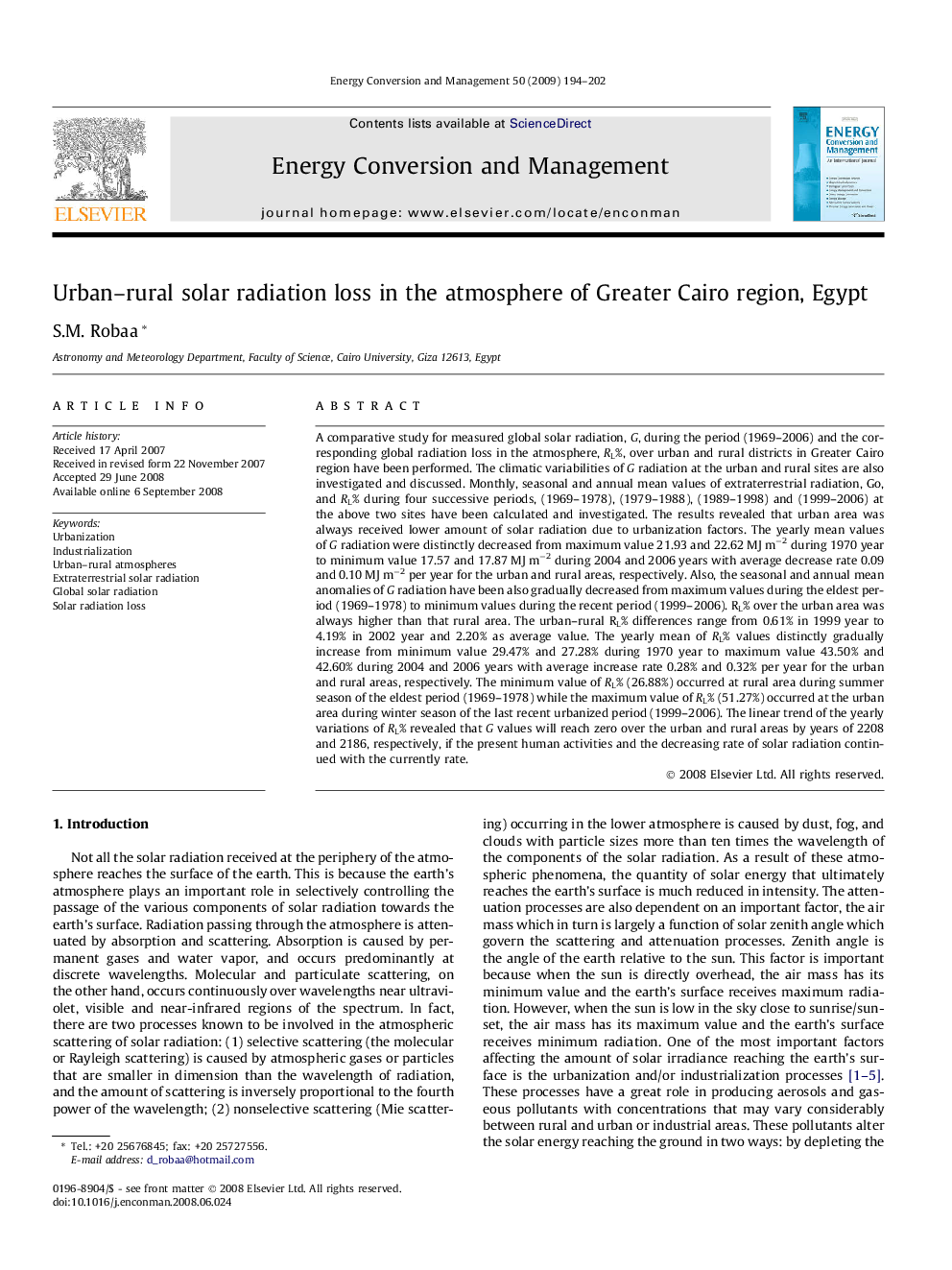| Article ID | Journal | Published Year | Pages | File Type |
|---|---|---|---|---|
| 765243 | Energy Conversion and Management | 2009 | 9 Pages |
A comparative study for measured global solar radiation, G, during the period (1969–2006) and the corresponding global radiation loss in the atmosphere, RL%, over urban and rural districts in Greater Cairo region have been performed. The climatic variabilities of G radiation at the urban and rural sites are also investigated and discussed. Monthly, seasonal and annual mean values of extraterrestrial radiation, Go, and RL% during four successive periods, (1969–1978), (1979–1988), (1989–1998) and (1999–2006) at the above two sites have been calculated and investigated. The results revealed that urban area was always received lower amount of solar radiation due to urbanization factors. The yearly mean values of G radiation were distinctly decreased from maximum value 21.93 and 22.62 MJ m−2 during 1970 year to minimum value 17.57 and 17.87 MJ m−2 during 2004 and 2006 years with average decrease rate 0.09 and 0.10 MJ m−2 per year for the urban and rural areas, respectively. Also, the seasonal and annual mean anomalies of G radiation have been also gradually decreased from maximum values during the eldest period (1969–1978) to minimum values during the recent period (1999–2006). RL% over the urban area was always higher than that rural area. The urban–rural RL% differences range from 0.61% in 1999 year to 4.19% in 2002 year and 2.20% as average value. The yearly mean of RL% values distinctly gradually increase from minimum value 29.47% and 27.28% during 1970 year to maximum value 43.50% and 42.60% during 2004 and 2006 years with average increase rate 0.28% and 0.32% per year for the urban and rural areas, respectively. The minimum value of RL% (26.88%) occurred at rural area during summer season of the eldest period (1969–1978) while the maximum value of RL% (51.27%) occurred at the urban area during winter season of the last recent urbanized period (1999–2006). The linear trend of the yearly variations of RL% revealed that G values will reach zero over the urban and rural areas by years of 2208 and 2186, respectively, if the present human activities and the decreasing rate of solar radiation continued with the currently rate.
